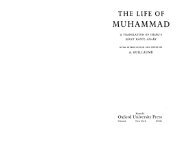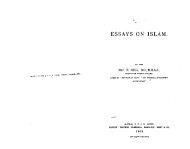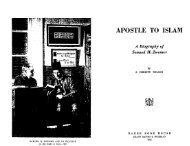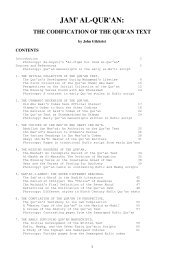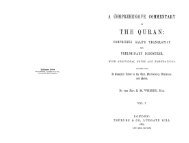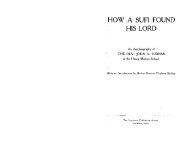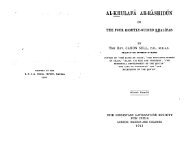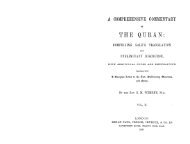Islam Its Belief and Practices - Radical Truth
Islam Its Belief and Practices - Radical Truth
Islam Its Belief and Practices - Radical Truth
Create successful ePaper yourself
Turn your PDF publications into a flip-book with our unique Google optimized e-Paper software.
48 ISLAM ITS BELIEFS AND PRACTICES<br />
iii. Qiyam-i-Tasmf, lit. St<strong>and</strong>ing <strong>and</strong> declaring<br />
that God hears. The worshipper after Bowing<br />
st<strong>and</strong>s erect. but unlike the former Qiyam<br />
the h<strong>and</strong>s are placed on either side. In the<br />
congregational prayers. while in this posture.<br />
the Imam says aloud: "God hears him who<br />
praises Him." The congregation responds:<br />
"0 our Lord. Thou art praised." When the<br />
prayers are said by a person alone, he himself<br />
recites both these sentences.<br />
iv. Sijda. Prostration. The prostration is made in<br />
such a way that his knees. the toes of his feet.<br />
to the palms of his h<strong>and</strong>s. <strong>and</strong> the fingers close<br />
each other; the nose <strong>and</strong> the forehead touch<br />
the ground. The ground should be touched<br />
first with the knees. then with the h<strong>and</strong>s<br />
<strong>and</strong> next with the nose <strong>and</strong> the forehead.<br />
The elbows must not touch the ground, nor<br />
the stomach the thigh. nor the thigh the calf<br />
of the leg.<br />
The women. on the contrary. keep all the limbs<br />
of the body together. The order of the<br />
Prostration consists of the fO,llowing:<br />
(a) Takbir-i-Sijda. the Takbir of Prostration.<br />
As the worshipper drops on his knees<br />
in the manner described above he says:<br />
Allah-o-Akbar.<br />
(b) Tasbih-i-Sijda. The Praise of Prostration.<br />
While in the state of prostration he<br />
repeats the following prayer three<br />
times: "Praise be to Thee 0 my Lord<br />
the most High."<br />
v. Qa'da or Jalsa. Sitting Posture. The worshipper<br />
rises from prostration <strong>and</strong> sinks backward<br />
. THE PRESCRIBED DUTIES 49<br />
upon his heels <strong>and</strong> places his h<strong>and</strong>s upon his<br />
thighs <strong>and</strong> he does this in the following<br />
order:<br />
(a) Takbir-i-Jalsa. the Takbir of the Sitting<br />
Posture: As he rises from the prostration<br />
he says Allah-o-Akbar.<br />
(b) Takbir-i-Sijda. the Takbir of Prqstration.<br />
He says Allah-o-Akbar <strong>and</strong> prostrates<br />
as before.<br />
vi. Sijda, Prostration. The worshipper performs<br />
another prOstration <strong>and</strong> repeats the TasbQti-Sijda;<br />
"Praise be to Thee. 0 my Lord. the<br />
most High," three or five times.<br />
Here ends the first portion. called Rak'at or<br />
Bow ·of the Namaz. Each Namaz consists of<br />
several such Rak'ats. But no Namaz is of<br />
less than two nor of more than four Rak'ats,<br />
except Witr Namaz which may consist of 3, 5<br />
or 7 Rak'ats. For the second Rak'at the<br />
worhipper continues his Namiiz by rising<br />
after the second prostration of the first<br />
Rak'at <strong>and</strong> resumes the position of the Qiyam<br />
<strong>and</strong> uses the following order:<br />
(1) Takbir-i-Qiyam. the Takbir of St<strong>and</strong>ing<br />
Position. He says Allah-o-Akbar as<br />
he rises from the prostration <strong>and</strong> st<strong>and</strong>s<br />
for his Qiyam.<br />
(2) While in the position of Qiyam he<br />
begins his second Rak'at with Tasmiya<br />
<strong>and</strong> Sura FatQta (i.e., from i. 3 in the<br />
order of the first Qiyam) <strong>and</strong> continues<br />
till the second prostration of the second<br />
Rak'at.



